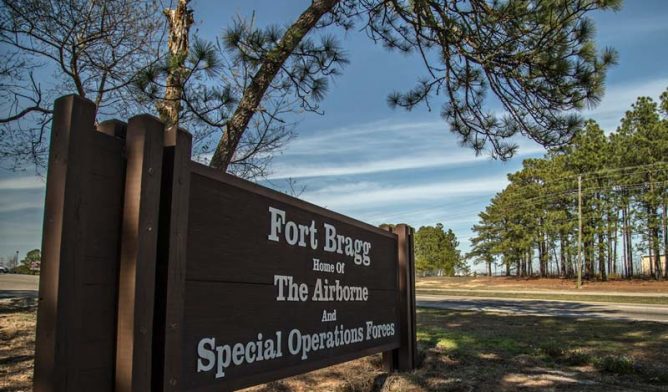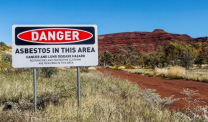Inspector General Report: Asbestos Exposure a Concern on Army Posts
Asbestos Exposure & BansWritten by Matt Mauney • Edited By Walter Pacheco
Asbestos.com is the nation’s most trusted mesothelioma resource
The Mesothelioma Center at Asbestos.com has provided patients and their loved ones the most updated and reliable information on mesothelioma and asbestos exposure since 2006.
Our team of Patient Advocates includes a medical doctor, a registered nurse, health services administrators, veterans, VA-accredited Claims Agents, an oncology patient navigator and hospice care expert. Their combined expertise means we help any mesothelioma patient or loved one through every step of their cancer journey.
More than 30 contributors, including mesothelioma doctors, survivors, health care professionals and other experts, have peer-reviewed our website and written unique research-driven articles to ensure you get the highest-quality medical and health information.
About The Mesothelioma Center at Asbestos.com
- Assisting mesothelioma patients and their loved ones since 2006.
- Helps more than 50% of mesothelioma patients diagnosed annually in the U.S.
- A+ rating from the Better Business Bureau.
- 5-star reviewed mesothelioma and support organization.
Testimonials
My family has only the highest compliment for the assistance and support that we received from The Mesothelioma Center. This is a staff of compassionate and knowledgeable individuals who respect what your family is experiencing and who go the extra mile to make an unfortunate diagnosis less stressful. Information and assistance were provided by The Mesothelioma Center at no cost to our family.LashawnMesothelioma patient’s daughter
How to Cite Asbestos.com’s Article
APA
Mauney, M. (2023, September 28). Inspector General Report: Asbestos Exposure a Concern on Army Posts. Asbestos.com. Retrieved April 18, 2024, from https://www.asbestos.com/news/2019/09/25/asbestos-army-post-concerns/
MLA
Mauney, Matt. "Inspector General Report: Asbestos Exposure a Concern on Army Posts." Asbestos.com, 28 Sep 2023, https://www.asbestos.com/news/2019/09/25/asbestos-army-post-concerns/.
Chicago
Mauney, Matt. "Inspector General Report: Asbestos Exposure a Concern on Army Posts." Asbestos.com. Last modified September 28, 2023. https://www.asbestos.com/news/2019/09/25/asbestos-army-post-concerns/.

Residents in privatized housing on nearly 50 Army installations cited concerns with issues such as lead paint and asbestos, the toxic building material linked to mesothelioma cancer, according to a recent report from the Department of the Army Inspector General.
The report, which was made public earlier this month, includes surveys, document reviews and interviews with residents at 49 Army installations across the U.S., including Fort Bragg (N.C.), Fort Campbell (Ky.) and Fort Hood in Texas.
Military families at 48 of the 49 sites cited concerns with safety or environmental issues inside the aging on-base housing at the installations. Residents at all 49 locations believed the property management company “placed the interests of affiliate companies above life, health and safety.”
The top environmental concerns reported in the survey include:
- Asbestos
- Mold
- Lead-based paint
- Water quality
- Open sewage
- Radon gas
Asbestos is a naturally occurring mineral that was used in dozens of construction materials throughout much of the 20th century to increase durability and fire resistance. Older homes, buildings and other structures built before 1980 likely contain asbestos materials such as drywall, cement, insulation, roofing and floor tile.
When these materials degrade over time, they can release toxic fibers into the air. Inhaling or ingesting these microscopic fibers can lead to serious health conditions decades later, including lung cancer and mesothelioma.
Asbestos was used in all branches of the military, and exposure was common in Army installations.
“Veterans and their families living in post housing built before the 1980s face potential health risks from their homes,” said Aaron Munz, former U.S. Army captain and director of the Veterans Department at The Mesothelioma Center at Asbestos.com. “Unfortunately, the conditions and maintenance of some post housing do not meet the standards that our military families deserve.”
49 Sites Include Nation’s Largest Military Posts
The inspection team collected data from 41 Army installations in the continental U.S., six in Hawaii and two in Alaska.
The report did not specify which Army installations cited concerns over dangerous asbestos. However, 25 of the 49 sites contain homes classified as historic. There are 4,056 historic homes, which represents 5% of the total number of privatized homes.
Inspectors noted that historic homes present unique challenges to the Army, private company property managers and residents, including health or safety concerns such as lead-based paint or asbestos.
“Often the conditions and state of repair expose our military personnel to dangerous substances, including asbestos,” Munz said. “Sometimes, these service members do not have any choice in their housing situation. This creates an environment where there is little accountability to improve the safety and comfort of these homes.”
Army installations inspected in the report include:
- Joint Base Langley-Eustis, Va.
- Joint Base Lewis-McChord, Wash.
- Moffett Field, Calif.
- Naval Post Graduate Academy, Calif.
- Picatinny Arsenal, N.J.
- Presidio of Monterey, Calif.
- Redstone Arsenal, Ala.
- Scholfield Barracks, Hawaii
- Tripler Army Medical Center, Hawaii
- Walter Reed, Md.
- West Point, N.Y.
Residents Dissatisfied with Property Management
The Army owns 49% of the privatized housing, while the Residential Communities Initiative (RCI) private company is the managing member, owning 51%.
Nearly all of residents surveyed (98%) expressed concerns with safety or environmental issues and some level of dissatisfaction with their privatized housing experience.
Other findings included:
- 48 of 49 locations lacked financial and operational transparency, which inhibits the government’s ability to conduct analysis.
- 98% of residents believe the RCI company placed cost savings above the quality of work; life, health and safety issues; and customer service.
- 45 of 49 locations reported a lack of routine and preventative maintenance.
- None of the locations provided residents with a work order history or a Change of Occupancy Maintenance report prior to the resident signing the lease agreement.
- 68% of residents said they would move off post if there were no financial costs or concerns.
“Military personnel should be aware of the long-term health risks in post housing so they can protect their families and inform their chain of command,” Munz said.







